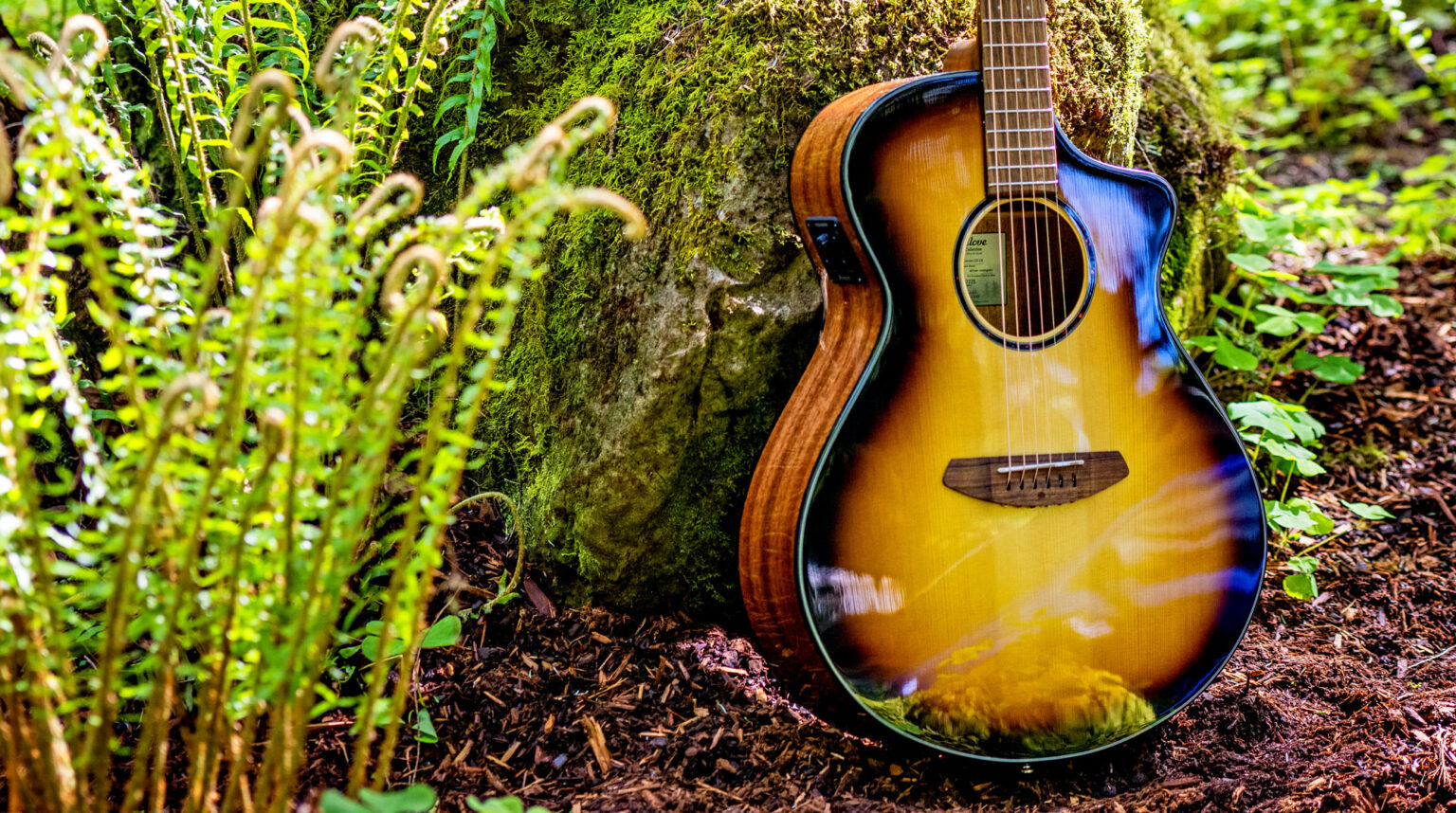
Picture an acoustic guitar in your mind. What color is the top of that instrument? Most likely it’s pale, lustrous, creamy with some yellow accent. In other words, it’s spruce—arguably, the iconic top wood. Guitarists and luthiers often focus on the three famous North American varieties: Sitka, Adirondack, and Engelmann. Those are the most common, and storied spruce in the annals of guitar lore, but another species of spruce from an altogether different continent deserves more attention than you’re probably giving it.
European Spruce at a Glance
European spruce shares the incredible strength to weight ratio of its more familiar cousins, providing unmatched projection, response, complexity, and versatility. European offers some of the headroom of Adirondack with a quicker response than Sitka. It’s most often compared to Engelmann, with a touch of cedar’s warmth. Depending on the body style and other tonewoods it’s paired with, European spruce can match well with sophisticated chords and fingerstyle arrangements or strummers with a firm attack.
Ancient, Massive, Adaptable Trees
The European spruce tree goes by many common names—German, Swiss, Italian, French, Finnish, Carpathian, Yugoslavian, Red, Common, and Norway Spruce are all often used to describe Picea abies. Whatever you call them, these are trees worth celebrating…if you’re into tress and tonewoods, anyway. And since that’s kind of our thing, we’re huge fans of European spruce.
Dating back 136 million years, these trees survived both the ice and industrial ages. They clung to the southern facing ranges of the Alps as the ice sheets receded, and were reintroduced to southern Germany, Poland, and Czechoslovakia after being plundered in the 18th and 19th centuries as the industrial revolution ramped up. Their adaptability to climate and soil types have allowed them to thrive far beyond their native range, from extreme oceanic northwest Scotland to the flatlands of central Wisconsin. The largest known specimen grows in Slovenia. It’s over 200 feet tall and is estimated to be about 250 years old, though other specimens have been dated at nearly twice that age.
The Original Soundboard
The tonal qualities of European spruce are no secret. These trees have been used to create the soundboards for stringed instruments like violins, violas, cellos, and basses for centuries. Acoustic guitars, on the other hand, generally feature soundboards made from Sitka, Adirondack, or Engelmann spruce. This has more to do with the modern acoustic guitar being a product of American industrialization than any inherent qualities of the wood itself. All the pioneering builders who created and defined the modern acoustic sound were based in the States, so they sourced their soundboards locally. These American spruces were first used because they most closely replicated the vaunted tonal qualities of the European spruce. Over time, as those early instruments like pre-war Martins came to define the look, feel, and sound of modern guitar, so did their source materials.
Spruce Scarcity
Today, mature specimens of all the most popular spruce varieties are scarce. Part of what makes these spruces such phenomenally resonant woods—their slow rate of growth—also makes them susceptible to overharvest. Old growth Sitka spruce has been virtually wiped out from its native range, as has much of the remaining Adirondack out East. Germany has lost virtually all its mature spruces. Industrial tree farms supply the market with low quality wood from young trees, but these yield underwhelming soundboards. That’s why quality spruce top guitars are in such high demand, the real ones, made from wood that grew in ancient forests, are hard to come by.
Classical Soundboards for Modern Guitars
At Breedlove, we only use high-quality tonewoods sourced from healthy forests where trees are selectively harvested to ensure both the highest quality products and the longevity of functional ecosystems. Finding spruce that meets our strict criteria isn’t easy, but the results are worth the effort. As mature Sitka and Adirondack become more scarce, we’re focusing on the original spruce tonewood from across the pond. All our European spruce comes from our good friend Nicholas Weber, who lives in Europe and has dedicated his life to sourcing sustainable and exceptional wood for instrument builders. With Nicholas’ help, we’re transitioning to more European spruce for both soundboards and bracing, and we’re confident you’ll find that it meets, or exceeds, your expectations for that classic spruce sound.
It’s light but extremely rigid, creating the optimal weight to inner friction relationship. The sound properties are well balanced between pure notes and raw power. The result is a guitar that’s punchy but very clear, offering sweet overtones. This classical soundboard absolutely sings when expertly applied to modern guitars.
Discover what happens when the original wood of lutherie blends with contemporary design and our cutting edge Sound Optimization technology on this Premier Concert CE. Or experience its versatility for yourself in our accessible but exceptional Discovery S Series.
